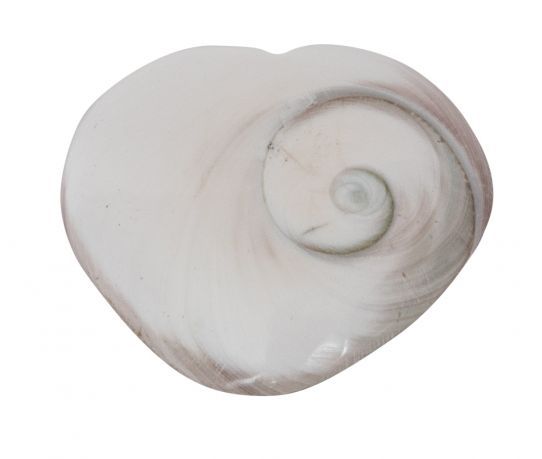We use cookies to make your experience better.
Santa Lucia lucky heart from Madgaskar, also known as "Eye of Shiva" Beautiful decorative.
- Buy 25 for €1.50 each and save 25%
Origin of the heart symbol.
In the Middle Ages they did not take it so closely with scientific facts and did little research themselves. They indisputably took over what Greek scientists had invented and this did not always go well. The Greek scientists Aristotle and Galen, for example, were not yet completely concerned about the shape of the heart. The people in the Middle Ages became confused by this and made a hodgepodge of both points of view. They drew the heart with a notch and a pointed point. This form was displayed so many times that it became established at a given moment. Although it later became known worldwide what the heart really looks like, the symbol has never changed since then. In fact, we owe the heart symbol to the laxity of the people in the Middle Ages. There are also people who believe in a different origin. For example, they think that the female body was the source of inspiration for the heart symbol and the arches represent the round breasts or buttocks of women. Others think that the symbol was inspired by the herb Silphium, which has leaves in the familiar heart shape. This herb used to be linked to healing and love.
The heart has not always been a symbol of love. For example, the Aztecs thought the heart served as food for the Sun God, while the ancient Egyptians thought conscience and intelligence were stored in the heart. The image below is from the 15th century and is the first known visual source in which the heart symbolizes the love that someone feels for someone else. In the 16th century the heart symbol became popular in Europe and became the well-known symbol for love.
Jade is the common name for two minerals used as gemstones: jadeite and nephrite. In the economic circuit is also nepjade. This is worth less than genuine jade. One can distinguish the two from each other by real jade in a long period of time changes color as the years has been in contact with human skin. Jade has many different colors: green, brown, black or wolkenwit, from very light to very dark. Jade is like soapstone and chalcedony been cut and edited thousands of years by the Chinese. Jade was originally used as a tool but came during the Han Dynasty in vogue as jewelry. The only place where nephrite found in China located in Sinkiang around the city of Khotan. In Chinese culture is only processed jade seen as valuable. A lump of raw jade is of lesser value. In Sanzijing is listed as a comparison with education: "If one does not polishing jade, it is not costly thing if a man does not learn, his life has no meaning, because he knows the norms, values and respect for life is not. and thus will never be accomplished "(玉不琢不成器 人 不 學 不知 義). Jade is considered a valuable stone that wards off evil forces. When carried a long piece of jade on his body, for example a piece of thread around the neck, one will see that the jade slowly changes color. During the 2008 Olympics in Beijing, the medals feature jade.
| Dimensions | 30-40mm |
|---|












